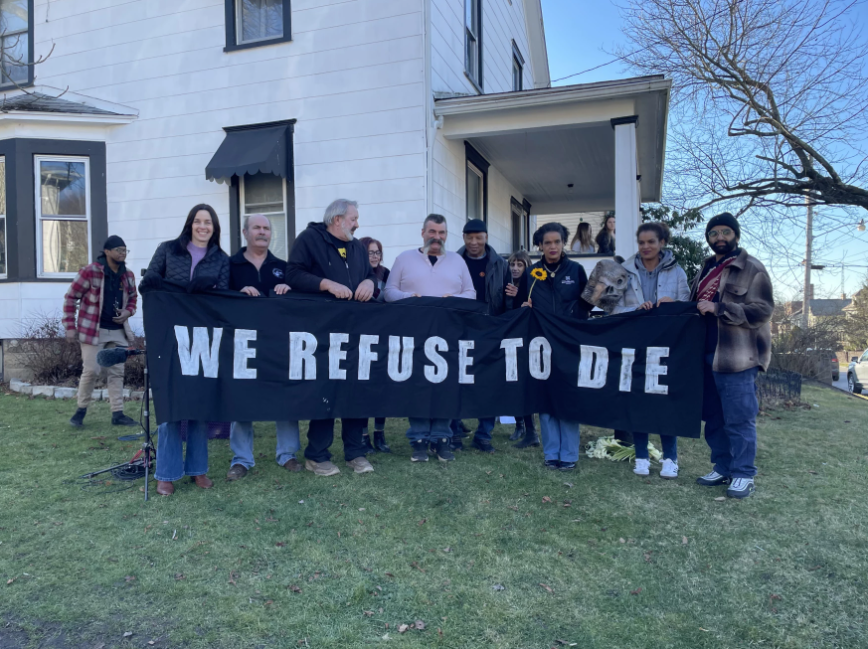Toxic Tuesdays
CHEJ highlights several toxic chemicals and the communities fighting to keep their citizens safe from harm.
Lead in Public Housing
Lead is a naturally occurring metal that has been used in many household products like paint and plumbing materials. This makes people most likely to be exposed to lead in their own homes, through ingesting or inhaling contaminated paint, dust, or water. Lead exposure affects all organs but is particularly damaging to the brain, causing defects in learning and memory. Children are especially vulnerable to lead exposure because of their growing brains, and exposure can cause defects in brain development, behavioral problems, and irreversible learning disabilities. Even though it’s been known for over two hundred years that lead is toxic, it is estimated that 800 million children worldwide are exposed to lead today. (CHEJ has previously written about the health effects of lead exposure here.)
A new study has found that access to federal housing assistance is associated with lower blood lead levels (BLLs), demonstrating how housing access influences health. The US Department of Housing and Urban Development (HUD) has three main housing assistance programs that help 5 million low-income households access affordable, high-quality housing:
- The public housing program provides subsidized housing units at a specific site that is owned by the local public housing authority.
- The multifamily income-restricted housing program provides subsidized housing units at a specific site that is owned by a private entity.
- Tenant-based housing choice vouchers (HCVs) provides subsidies for tenants to use towards finding housing in the private market.
The study authors linked HUD administrative records to data from an existing survey that measured people’s health including their BLLs. This allowed the authors to connect people’s BLLs to whether or not they were enrolled in a HUD housing program. To determine if access to HUD housing programs was associated with lower BLLs, the authors compared those who were enrolled in a HUD program to those who were not enrolled but would become enrolled within the next 2 years. This ensured that the groups being compared were similar in their socio-economic status and eligibility for HUD housing assistance. Overall, the study sample included over four thousand people.
The authors found that when controlling for demographic factors like race, ethnicity, sex, age, partnership status, and households size, average BLL was 11.4% lower for people enrolled in HUD housing programs compared to people who were not enrolled at the time. The effect was biggest for people enrolled in public housing programs. The effect was smallest for people enrolled in the HCV program. The authors hypothesize that this protective effect of HUD housing assistance is because HUD has stricter compliance and enforcement of federal lead-paint laws – such as the Lead-Paint Poisoning Prevention Act, the Residential Lead-Based Paint Hazard Reduction Act, and the Lead-Safe Housing Rule – in their public-owned housing units compared to housing units that are privately owned. Because the HCV program has recipients find housing on the private market, this may explain why there was little effect on BLLs for people enrolled in HCV. The authors also note that as housing construction has slowed in the past few decades, affordable housing options on the private market tend to be older construction that are more likely to contain lead-based paint and pipes. HUD’s required inspections, maintenance, abatement, and clearance activities seem to be effective at decreasing people’s exposure to lead. This is consistent with previous studies that have found other positive health outcomes associated with public housing.
The authors found that the association between HUD housing program enrollment and lower BLLs was strongest for non-Hispanic white people. The association was much lower for Black and Mexican American people. While the study cannot explain why this is, the authors offer several explanations rooted in historical and ongoing racism:
“Black households continue to face significant barriers to high-quality housing and high-opportunity neighborhoods that may have fewer lead hazards because of legacies of racist housing policies and urban planning practices in the United States. These practices include redlining, zoning and land use restrictions, gerrymandering of school and census boundaries, predatory lending, and urban renewal initiatives in Black and Brown neighborhoods that displaced families and built highways, airports, and other large pollution-emitting sources in their neighborhoods through eminent domain.”
Overall, this study indicates that housing through HUD programs protects against lead exposure. This is likely a success story of regulations that require inspection, abatement, and removal of lead in public housing; it suggests that requiring units on the private housing market to adhere to these same regulations could have a significant impact on lead exposure in the United States. Because lead is one of the worst toxic chemicals with the potential to do lifelong damage to children, public policy efforts that reduce lead exposure should be a priority. The fact that the lead protective effect of HUD programs is less substantial for nonwhite people demonstrates how systemic racism impacts housing and health. This study shows that housing justice and environmental justice are deeply intertwined: access to high-quality housing is crucial for health and safety. The study also shows that neither housing justice nor environmental justice can be achieved without racial justice.
Learn about more toxics
Benzidine
Pyrethrins are a class of naturally occurring compounds derived from chrysanthemum flowers. They have been
Pyrethrins
Pyrethrins are a class of naturally occurring compounds derived from chrysanthemum flowers. They have been
Hydraulic Fracturing
Hydraulic fracturing (commonly known as fracking) is a technique that uses pressurized liquid to fracture






